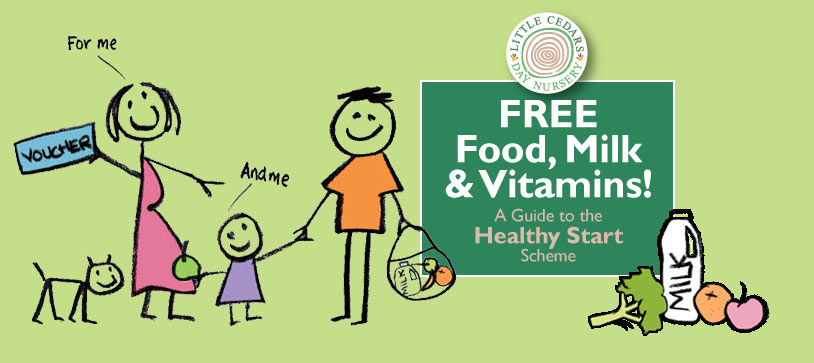
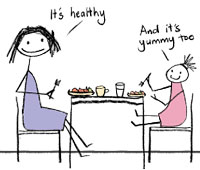 Are you pregnant, or a parent with a child under four? If so, your family may be eligible for free healthy food, milk and vitamin supplements. In England, some of these free items are available under the ‘Healthy Start’ scheme, which we’ll explain in this quick-start guide.
Are you pregnant, or a parent with a child under four? If so, your family may be eligible for free healthy food, milk and vitamin supplements. In England, some of these free items are available under the ‘Healthy Start’ scheme, which we’ll explain in this quick-start guide.
At time of writing, the free items are available through vouchers that can be redeemed in any of the 21,000 or so physical shops, supermarkets and pharmacies that have signed up to accept them. Each voucher is currently worth £3.10 and you can get 1 every week if you are pregnant or have a child aged between 1 and 4 years of age, or 2 vouchers per week if your child is under 1.
LATEST UPDATE: the NHS has also begun testing a new alternative where money is paid into your account instead of supplying vouchers. This beta test is running right now, on an invitation-only basis via a letter from the NHS. Hopefully it’ll be rolled out country-wide if successful. If so, it could cure the current issue whereby vouchers cannot be used to pay for food, vitamins and milk online. Clearly, that’s a significant issue in view of the pandemic and the move to shopping more online.
So, what free stuff can you get?
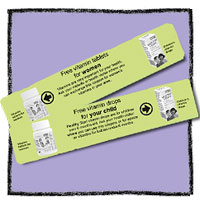 Eligible individuals can get the following, absolutely free:
Eligible individuals can get the following, absolutely free:
- Cow’s milk;
- Infant formula milk;
- Fruit;
- Vegetables;
- Pulses;
- Free vitamin supplements for breastfeeding mums;
- Free vitamin drops for young children (6 months to 4 years).
Free milk
This must be plain cow’s milk that’s also pasteurised, sterilised, UHT or long-life.
- It can be skimmed, semi-skimmed or whole milk.
- It can’t be flavoured, coloured, evaporated, condensed, powdered (except for infant formula milk), sold as a milkshake, vitamin-enriched or have anything else added to it.
- It can’t be anything other than cow’s milk, for example soya milk, almond milk, oat milk, rice milk, goat or sheep’s milk etc.).
Free infant formula milk
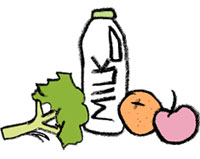 The infant formula milk:
The infant formula milk:
- must state that it’s a nutritionally complete stage one formula milk that’s suitable for use from birth.
- mustn’t be ‘follow-on’ milk.
- must be based on cow’s milk. You can’t get formula milk based on soya milk, almond milk, oat milk, rice milk, goat’s milk etc.
Free fruit & vegetables
The free fruit and vegetables:
- can include any that are fresh, frozen or tinned.
- can include any that are supplied loose, packaged, sliced, chopped, mixed, whole or supplied in water.
- can include fruit in fruit juice.
- can’t include any that have had fat, oil, salt, sugar or flavouring added.
- can’t include any that have been dried, pre-cooked or made into things like smoothies.
Free pulses
The pulses, including things like lentils, beans, peas and chickpeas:
- can include any that are fresh, dried or tinned.
- can’t include any that have had fat, oil, salt, sugar or flavouring added.
Free vitamin supplements
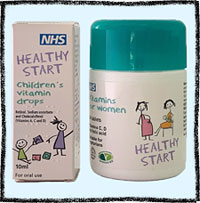 These free vitamin supplements are important for pregnant women, breastfeeding mums, babies and young children because many are deficient in them at this stage in their lives.
These free vitamin supplements are important for pregnant women, breastfeeding mums, babies and young children because many are deficient in them at this stage in their lives.
For children aged up to 4, they are in drop form and contain vitamin A, vitamin C and vitamin D. They are suitable for vegetarians and do not contain milk, eggs, gluten, soya or peanuts. Each bottle should last for 8 weeks. Note that children who are consuming 500ml per day of nutritionally complete formula milk do not need the additional vitamin supplements.
For pregnant women and nursing mums, the supplements are in tablet form and contain vitamin C, vitamin D and folic acid. They are suitable for vegetarians and vegans and do not contain colouring, flavouring or preservatives. They also contain no gluten, wheat, salt, egg or fish. Eligible mothers are supplied with 8 weeks’ worth of tablets at a time.
The vitamin supplements are distributed to stockists by the NHS and are ‘Healthy Start’ branded. Only this brand is available free under the Healthy Start scheme.
Eligibility
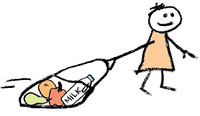 In order to be eligible for Healthy Start vouchers, you need:
In order to be eligible for Healthy Start vouchers, you need:
- to be 10 or more weeks’ pregnant and/or
- to have 1 or more children under 4.
Eligibility also requires that you must* be in receipt of at least one of the following:
- Income Support;
- Income-based Jobseeker’s Allowance;
- Income-related Employment & Support Allowance;
- Pension Credit;
- Universal Credit (only for families earning £408 each month, or less, from employment);
- Working Tax Credit (only for families receiving the 4 week ‘run-on’ payment after they’ve stopped qualifying for it);
- Child Tax Credit (only for families with an income of £16,190 or less per annum).
* Except if you’re under 18.
How to apply for the vouchers
Currently, most people need to apply for Healthy Start vouchers, by filling in an application form. Download the application form here, print it out and fill it in. It will also need to be signed by your registered doctor, health visitor, midwife or health professional. Then it will need to be posted (free) to the following address:
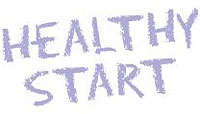
Freepost RRTR-SYAE-JKCR
Healthy Start Issuing Unit
PO Box 1067
Warrington
WA55 1EG
Call the Healthy Start helpline if you have any queries (0345 607 6823).
Childcare services in Streatham, London SW16
We hope that this guide is useful to pregnant ladies and parents of babies or under-fives. We are an outstanding nursery in Streatham, London SW16, offering exceptionally high quality childcare services for babies, toddlers and preschoolers within this age group. If you’d like to learn more about our nursery, please call 020 8677 9675 or send us a message here. We’ll answer any questions and would be happy to book you in for a nursery visit if you are considering a nursery place here for your baby or child. We’re convenient for those looking for nurseries near Streatham Hill, Streatham Common, Streatham Park, Upper Tooting, Tooting Bec, Tooting Common, Furzedown & Balham.
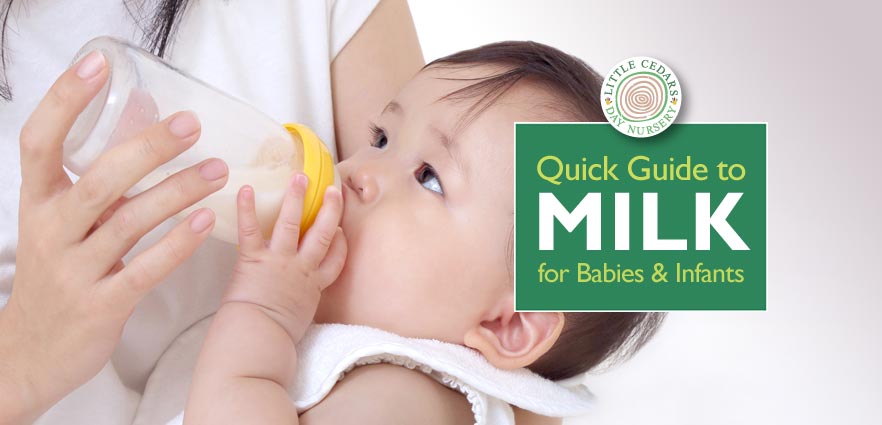
 Our “Benefits of Breastfeeding” post described in great detail how breast milk really is nature’s perfect food for babies. It’s tailored to the needs of the baby and even adapts as the baby grows. As well as essential vitamins, minerals, fats and proteins, it also passes antibodies, hormones and polyunsaturated fatty acids to the baby. All these things are incredibly important to the growing infant and many are simply not possible with formula milk and alternatives to breast milk. That said, there are many reasons why parents may switch to other alternatives and that’s where today’s guide should prove most useful.
Our “Benefits of Breastfeeding” post described in great detail how breast milk really is nature’s perfect food for babies. It’s tailored to the needs of the baby and even adapts as the baby grows. As well as essential vitamins, minerals, fats and proteins, it also passes antibodies, hormones and polyunsaturated fatty acids to the baby. All these things are incredibly important to the growing infant and many are simply not possible with formula milk and alternatives to breast milk. That said, there are many reasons why parents may switch to other alternatives and that’s where today’s guide should prove most useful. The variety of formula milks is surprisingly large, not helped by the fact that different brands call some of them by different names. Some products and names also seem to have been developed in order to cover small niches, many of which are actually already adequately covered by larger, existing product lines (‘Toddler Milk’ and ‘Growing-Up Milk’ are two examples cited by the NHS). Then add in the fact that many are sold as liquid and also as powder that needs to be made up. The choice can be overwhelming, which is where the following guide can help …
The variety of formula milks is surprisingly large, not helped by the fact that different brands call some of them by different names. Some products and names also seem to have been developed in order to cover small niches, many of which are actually already adequately covered by larger, existing product lines (‘Toddler Milk’ and ‘Growing-Up Milk’ are two examples cited by the NHS). Then add in the fact that many are sold as liquid and also as powder that needs to be made up. The choice can be overwhelming, which is where the following guide can help …
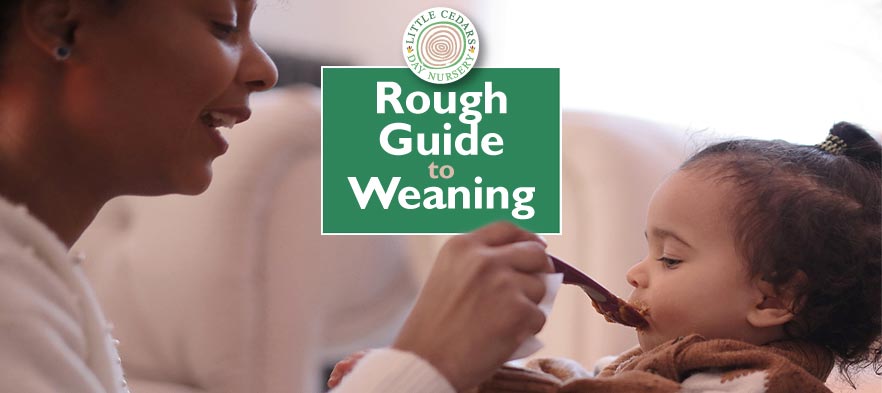
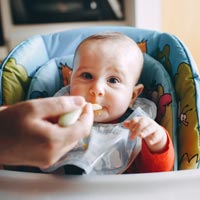 Also known as complementary feeding, weaning is an important milestone for any parent or baby and usually occurs when the baby reaches the age of about 6 months. Sometimes babies simply tire of milk and weaning thereby comes naturally. In other cases, a baby needs a bit more encouragement to make their transition towards solids. Here, we’ll explore the whole topic of weaning in more detail, including ways parents can help to make the transition smoothly and stress-free for all parties.
Also known as complementary feeding, weaning is an important milestone for any parent or baby and usually occurs when the baby reaches the age of about 6 months. Sometimes babies simply tire of milk and weaning thereby comes naturally. In other cases, a baby needs a bit more encouragement to make their transition towards solids. Here, we’ll explore the whole topic of weaning in more detail, including ways parents can help to make the transition smoothly and stress-free for all parties.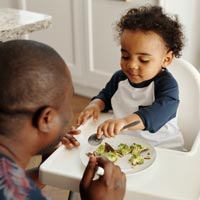 Weaning should be fun and it’s also the only time in a child’s life where they won’t have any preconceived ideas about what foods they “do or don’t like”. So, parents can experiment, within reason of course. It’s a time when introducing new foods to the baby comes naturally once the baby has caught on to the idea of this new experience.
Weaning should be fun and it’s also the only time in a child’s life where they won’t have any preconceived ideas about what foods they “do or don’t like”. So, parents can experiment, within reason of course. It’s a time when introducing new foods to the baby comes naturally once the baby has caught on to the idea of this new experience. Don’t rush it; set aside some time with baby so it’s relaxed, otherwise everyone can get stressed, especially initially.
Don’t rush it; set aside some time with baby so it’s relaxed, otherwise everyone can get stressed, especially initially. You can later move on to whole, (adult) finger-sized pieces of very soft fruits that baby can learn to hold. However, do read the Health & Safety Considerations section below before moving to un-mashed foods.
You can later move on to whole, (adult) finger-sized pieces of very soft fruits that baby can learn to hold. However, do read the Health & Safety Considerations section below before moving to un-mashed foods. Huge care needs to be taken to avoid giving infants anything that’s going to represent a potential choking hazard. Whole grapes, cherry tomatoes or anything else of a similar size would be examples of this as they are perfectly sized to block a baby’s airway if not first chopped up. Also avoid anything hard like nuts, raw vegetables or un-mashed apple and ensure that any pips/seeds/stones are removed from fruit and bones are removed from fish or meat.
Huge care needs to be taken to avoid giving infants anything that’s going to represent a potential choking hazard. Whole grapes, cherry tomatoes or anything else of a similar size would be examples of this as they are perfectly sized to block a baby’s airway if not first chopped up. Also avoid anything hard like nuts, raw vegetables or un-mashed apple and ensure that any pips/seeds/stones are removed from fruit and bones are removed from fish or meat. Always try to maintain a varied diet for the infant, so they get all the vitamins and nutrients they need as they intake less and less milk. Ensure the foods contain sufficient iron, which can be sought from fortified cereal, fish, milk, dark green vegetables, lentils and beans. Giving them finger foods to hold and eat themselves is a great way to encourage them to feed themselves (under supervision, of course). As they grow older they can be encouraged to eat at the family table with parents/siblings and eventually upskill to using cutlery, along with eventually learning the rules around good table manners etc.
Always try to maintain a varied diet for the infant, so they get all the vitamins and nutrients they need as they intake less and less milk. Ensure the foods contain sufficient iron, which can be sought from fortified cereal, fish, milk, dark green vegetables, lentils and beans. Giving them finger foods to hold and eat themselves is a great way to encourage them to feed themselves (under supervision, of course). As they grow older they can be encouraged to eat at the family table with parents/siblings and eventually upskill to using cutlery, along with eventually learning the rules around good table manners etc. Little Cedars is
Little Cedars is 
 Are you pregnant, or a parent with a child under four? If so, your family may be eligible for free healthy food, milk and vitamin supplements. In England, some of these free items are available under the ‘Healthy Start’ scheme, which we’ll explain in this quick-start guide.
Are you pregnant, or a parent with a child under four? If so, your family may be eligible for free healthy food, milk and vitamin supplements. In England, some of these free items are available under the ‘Healthy Start’ scheme, which we’ll explain in this quick-start guide. Eligible individuals can get the following, absolutely free:
Eligible individuals can get the following, absolutely free: The infant formula milk:
The infant formula milk: These free vitamin supplements are important for pregnant women, breastfeeding mums, babies and young children because many are deficient in them at this stage in their lives.
These free vitamin supplements are important for pregnant women, breastfeeding mums, babies and young children because many are deficient in them at this stage in their lives. In order to be eligible for Healthy Start vouchers, you need:
In order to be eligible for Healthy Start vouchers, you need:
